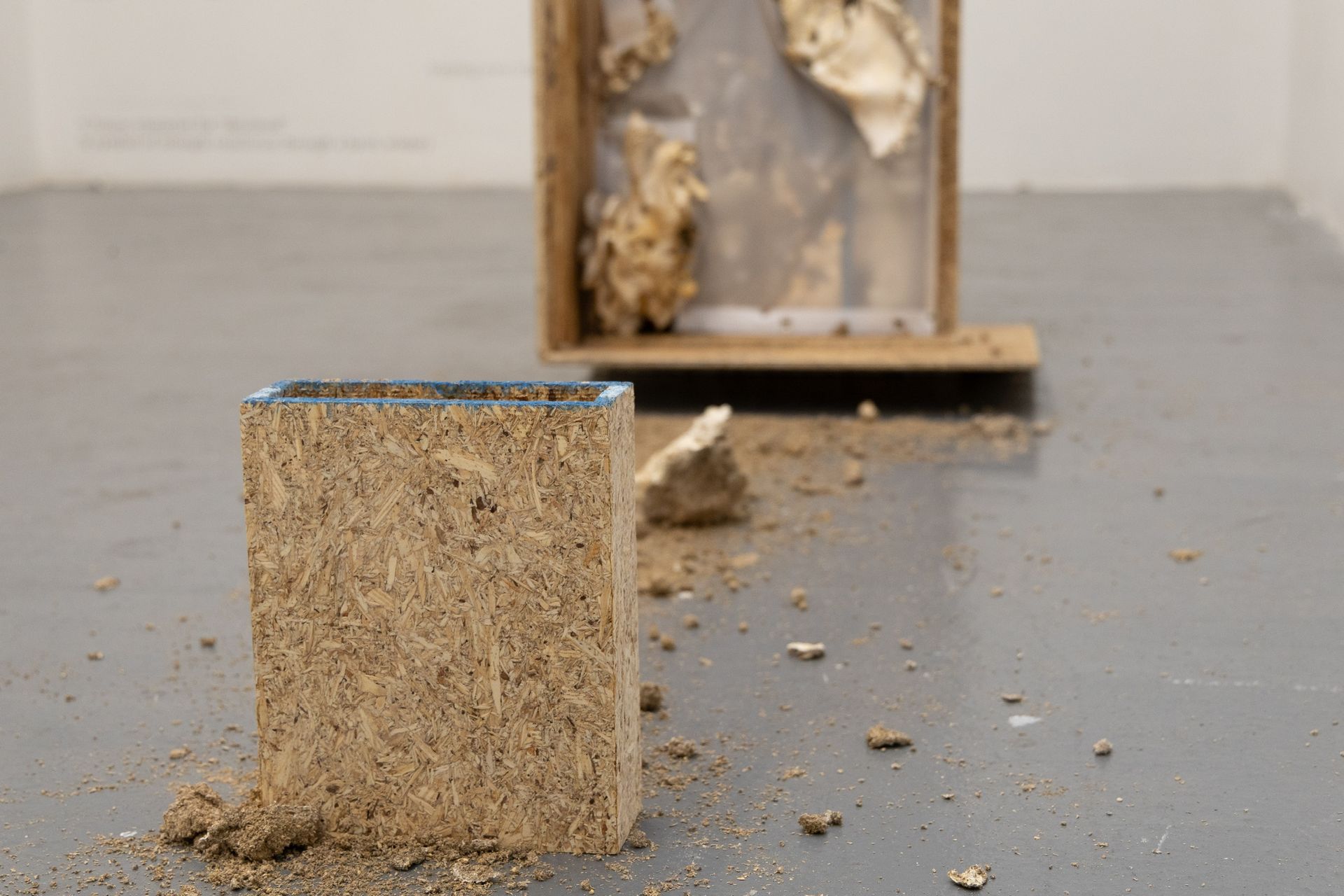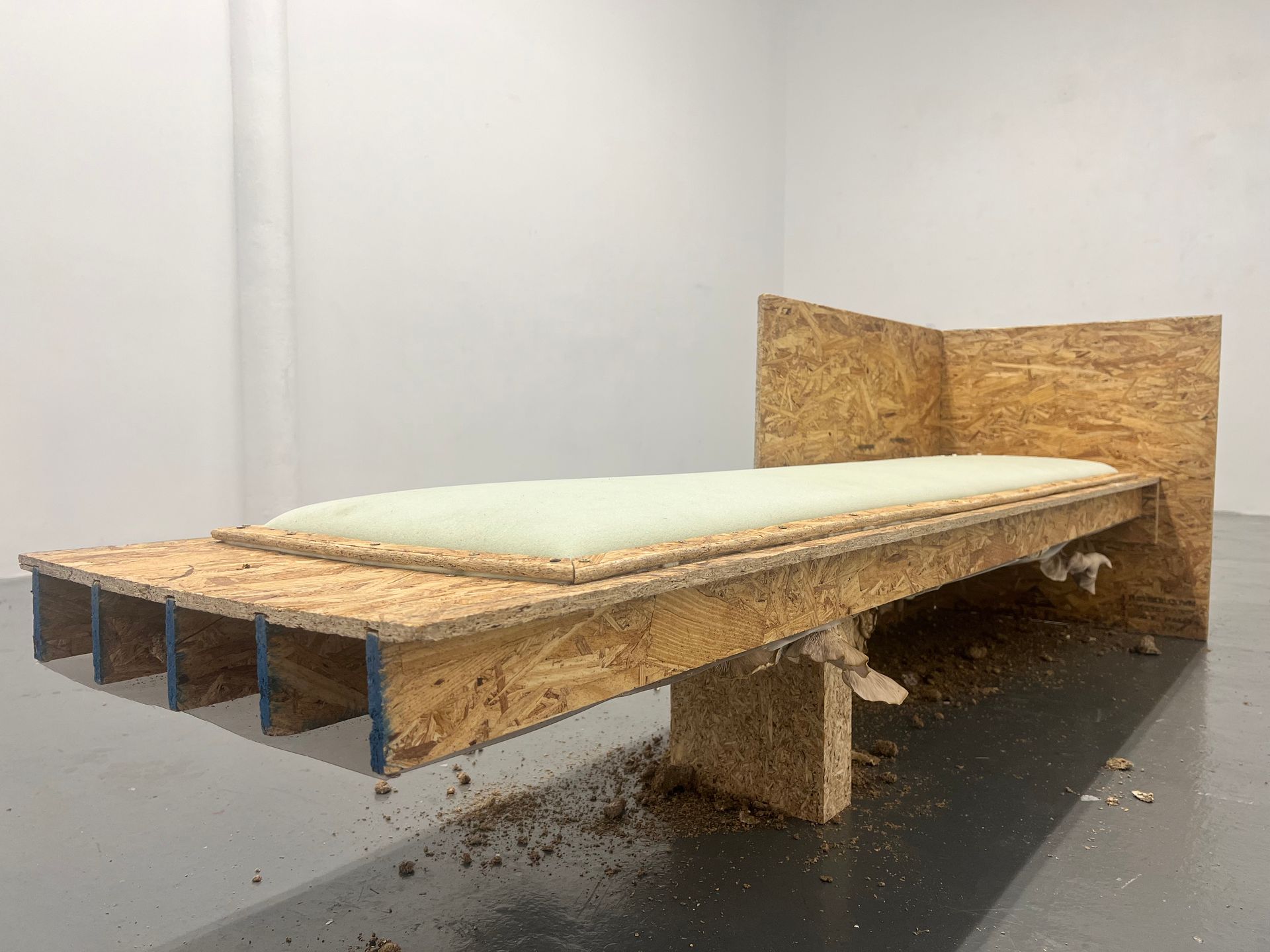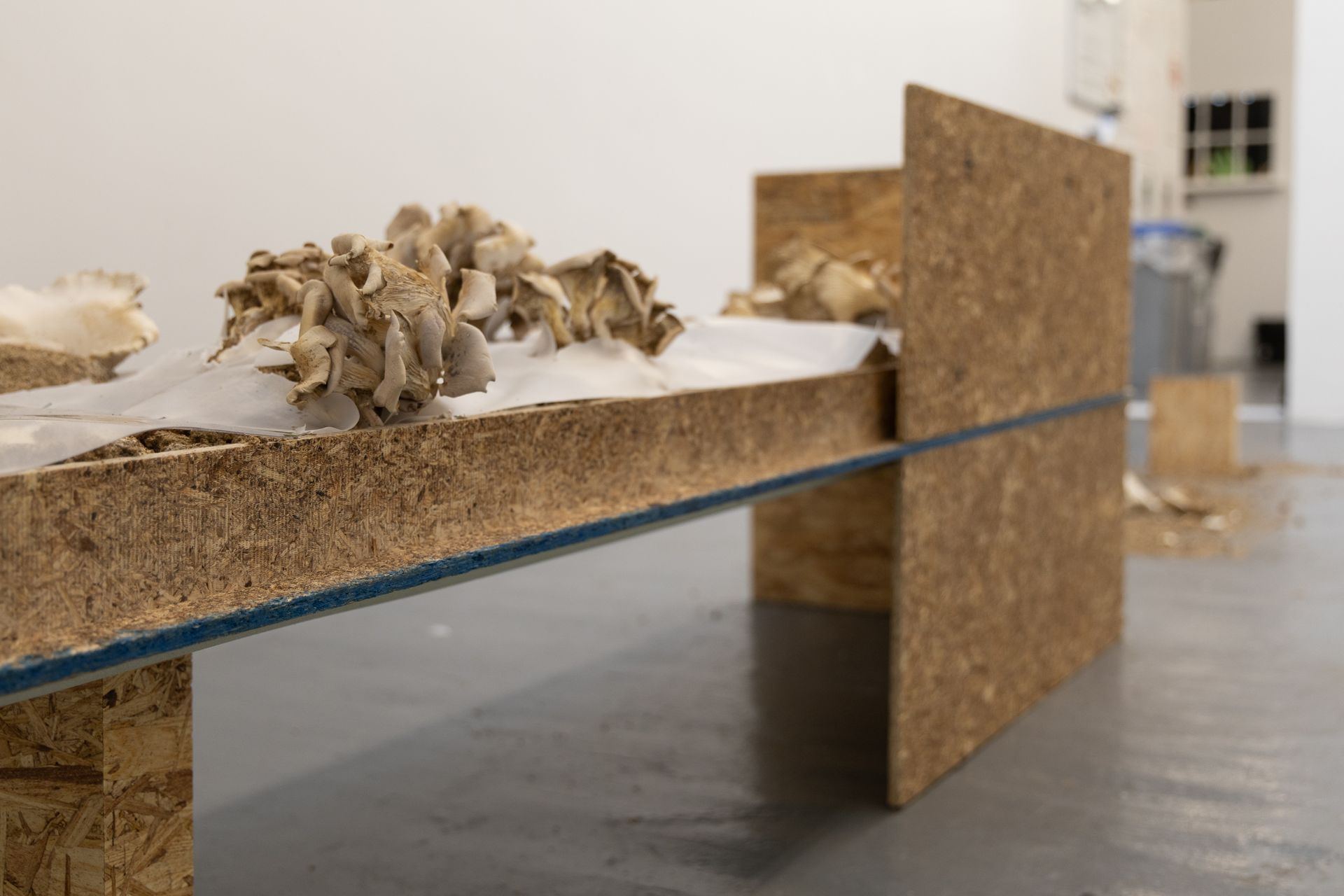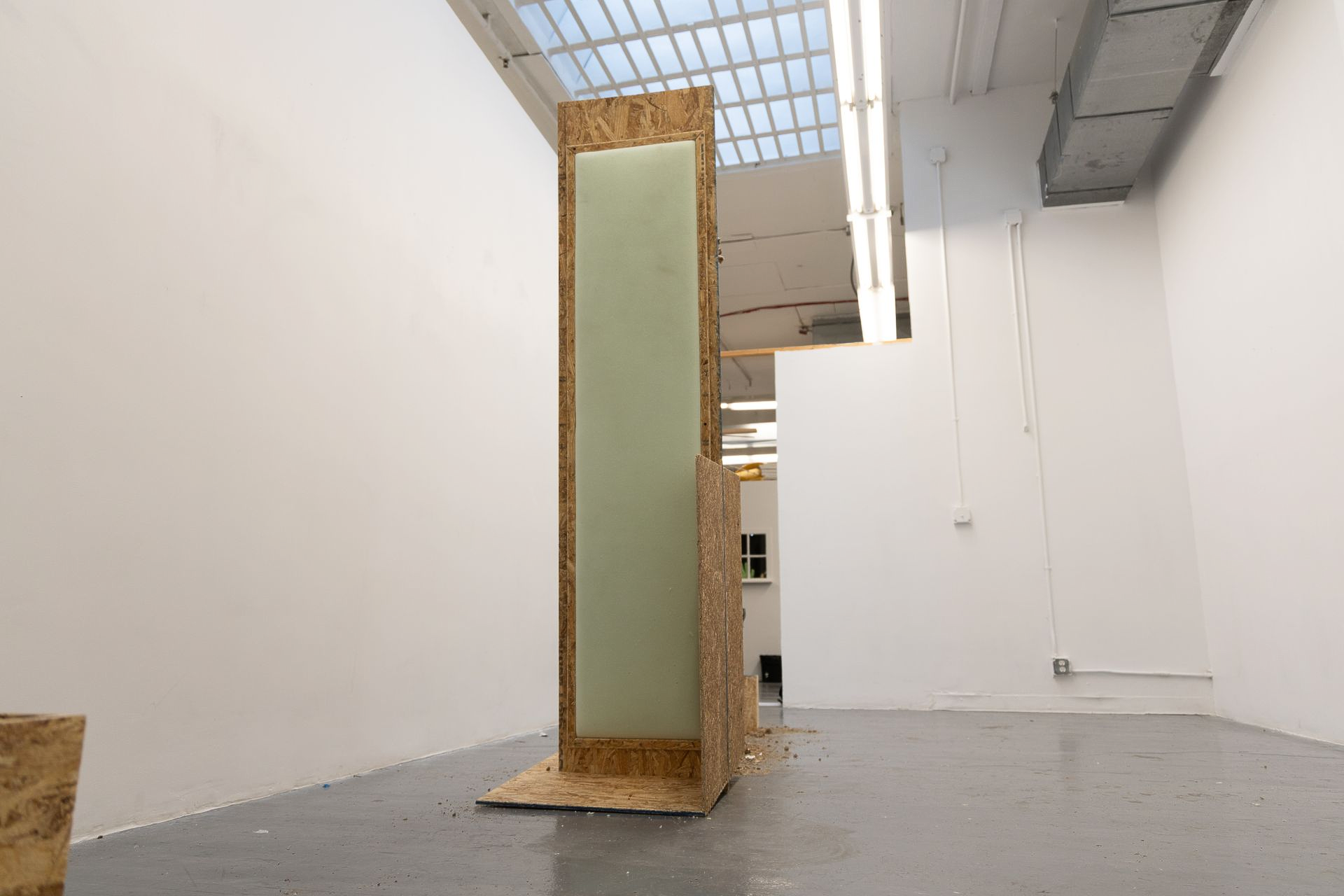Portfolio
A Porous Assemblage
A Porous Assemblage, 2025
NAF OSB, Memory Foam, Blue Oyster Mushroom Mycelium, Plastic Shower Curtain, Water.
My dad loved Nikes. His closet, a soft archive of design, sweat, and repetition, housed ninety-seven—or maybe ninety-eight—pairs, each a record of history. These shoes, like geological strata, held evidence of living. They were more than just footwear; they were a tangible connection to his life, a way to remember him. The last shoes we got him were white Air Force Ones. We all signed them before the funeral.
I wrote: Favorite Child — Kenna.
The Sharpie sank slightly into the leather.
His shoes became a site of interspecies contact, an assemblage of petroleum product and sentiment, of leather and rubber and microbial persistence. My dad’s body now exists within the soil as part of a biome—his deteriorating bones beside stitched foam, plastics leaching slowly into root systems. What does it mean to mourn within systems that metabolize waste?
Last week, I looked for a photo of my handwriting on those shoes. I couldn’t find the image. Only an image of his feet in the casket, turned slightly outward (gravity pulling them downward)—his soles blocking the words I meant to preserve. That image is the only one we have of his dead body.
For his viewing, we thought it would be funny to show his shoes instead of his face—it was. Where the casket hinges open, instead of a head on a cushioned pillow, viewers were met with feet in fresh sneakers.
None of us can remember if the people who buried him knew that he was upside-down in the casket. Even now, we aren’t sure if his head or shoes are under his headstone.
…
I’ve been thinking about flipping as an ontological refusal of fixed perspective. A drawing flipped upside down becomes less legible, yet more recognizable as an assemblage of lines, shadows, forms, and so on. In school, Instructors taught me to flip the reference upside-down when I couldn’t get the perspective right on a drawing. This flipping was a tool for understanding. Flipping distorts time, perception, and representation, implying a simultaneity of interior/exterior, top/bottom. Flipping implies a porous meaning of an assemblage—that is, how an object is oriented in space can expand meaning. In this context, flipping becomes a methodological tool to access the placeless place between form and meaning, a way to dwell inside the slippery placeless place.
So, I guess I’m making sculptures that flip now. To think of something as one way and then realize you’ve been caressing the underside and letting dirt fall through the cracks. This flip invites a place where meaning is slippery and porous. The lines are harder to draw, and things become increasingly difficult to differentiate from one another.
These inversions function as methodological tools to access the placeless place between form and meaning. They allow assemblages to evade stable categorization and become sites of overlap, leakage, and soft transformation. Through flipping, I’m not trying to clarify or contain, but to dwell inside these slippages, where touch/untouch, growth/decay, absurd/serious, pool in unstable forms.




